Keep your loved ones safe by ditching these toxic household cleaners and discover healthier alternatives that are just as effective!
Did you know that our cleaning habits can unknowingly pose risks to our homes? Traditional cleaners may make our homes shine, but they come at a high cost to our health and the environment.
They often contain harmful chemicals that can lead to allergies, breathing issues, and long-term health problems, while also polluting our ecosystems. But don’t worry!
Safer alternatives exist to keep your home fresh and clean. In this article, we’ll show you how to swap out hazardous cleaning products for healthier options, creating a safer living environment for you and your family!
Which household chemicals are toxic to humans?
Before we jump into the nitty-gritty of safer household products, let’s shine a light on the common household cleaners that are potentially dangerous.
- Window and Glass Cleaners
- Laundry Detergents
- Oven Cleaners
- Chlorine Bleach
- Drain Cleaners
- Carpet and Upholstery Cleaners
- Ammonia
- Air Fresheners
- Dishwasher Detergents
- Furniture Polish
- Mold and Mildew Removers
- Antibacterial Cleaners
- Toilet Bowl Cleaners
Ready to swap these out and create a healthier home? We’ve curated a comprehensive list of safer alternatives to each of these toxic household products.
1. Window and glass cleaner
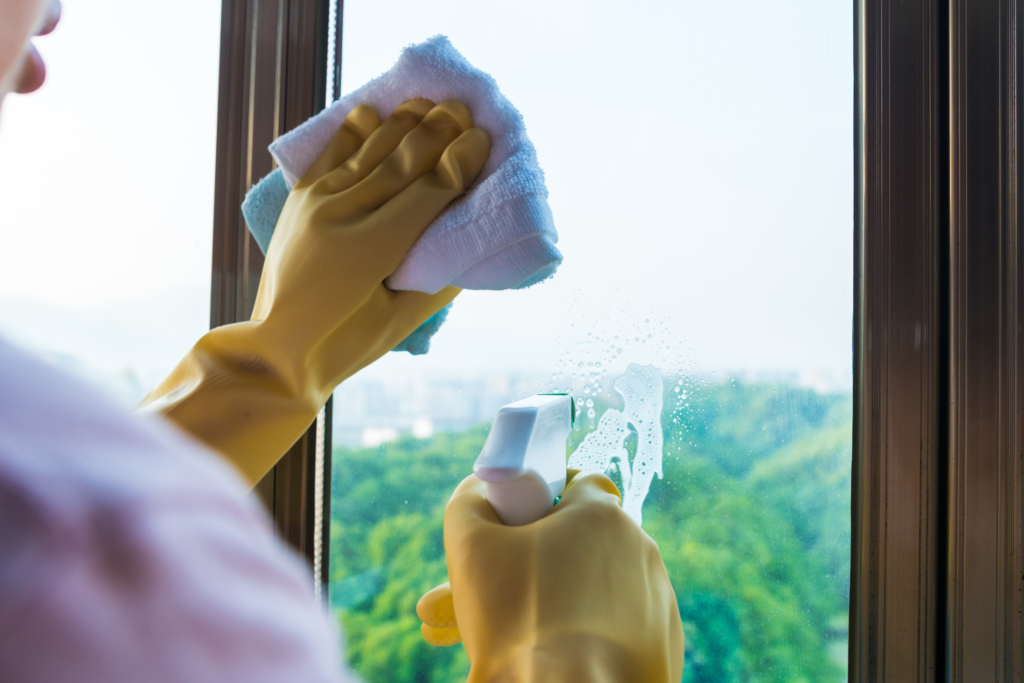
Most window and glass cleaners contain harsh ammonia, which can harm your respiratory system and skin. Plus, they leave streaks that ruin the shine.
But guess what? There’s a safer alternative!
Just mix equal parts white vinegar and water in a spray bottle. This magical solution cuts through grime, leaving your windows sparkling clean.
Best of all, it’s safer for your health and the environment too.
2. Laundry soap

Laundry detergents are a common household item that often contain several hazardous chemicals such as phosphates, surfactants, and fragrance. Phosphates can cause water pollution, surfactants can be extremely toxic to marine life, and artificial fragrances may trigger allergies and breathing problems.
Plus, these chemicals can remain on your clothes after washing, potentially irritating your skin. But don’t worry, there are safer alternatives!
One of the best options is to switch to plant-based laundry soap. These are typically made with natural, biodegradable ingredients that are safe for you, your clothes, and the environment.
They are free from phosphates and synthetic fragrances but are still powerful enough to effectively clean your clothes.
Another option is to make your own laundry detergent using basic ingredients like washing soda, borax, and bar soap. These DIY versions can be remarkably effective and allow you complete control over the ingredients used.
3. Oven cleaners
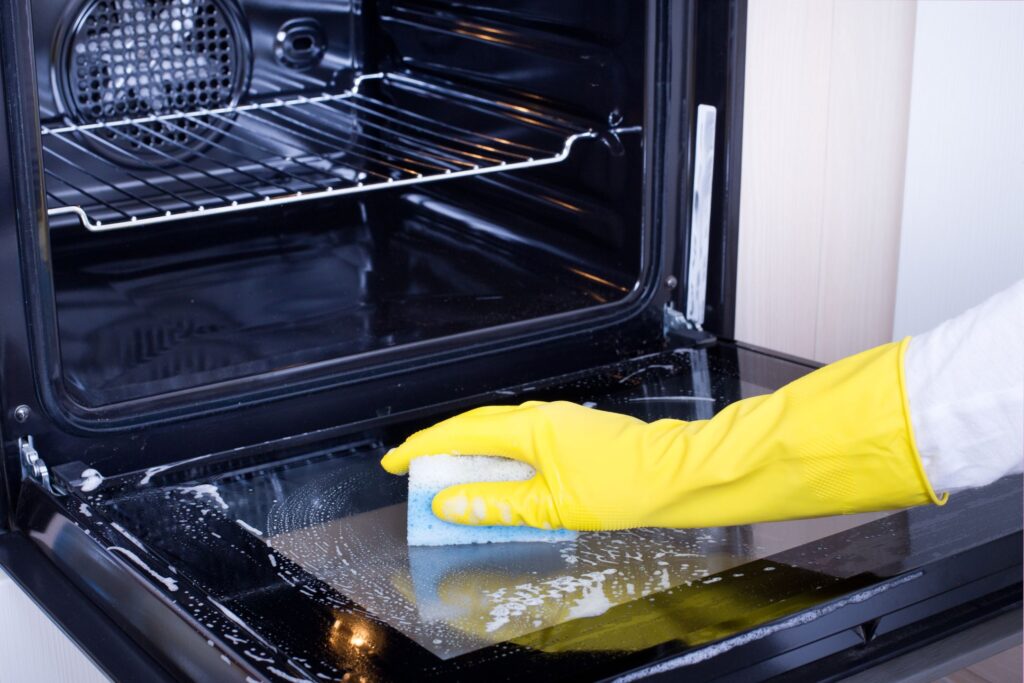
Oven cleaners are notoriously known for the harsh chemicals they contain, such as sodium hydroxide, which is highly corrosive and can cause burns to the skin and eyes. Plus, breathing in the fumes can cause respiratory issues.
These chemicals also pose a threat to the environment because they can pollute water sources when washed down the drain.
But worry not, there are safer substitutes for this as well!
You can make your own homemade oven cleaner using baking soda and vinegar. Simply make a paste of ½ cup baking soda with a few tablespoons of water.
Apply the paste inside the oven and let it sit overnight. The next day, spray vinegar over the paste, causing it to foam.
After the foaming stops, wipe the oven clean with a damp cloth. This homemade cleaner is not only safe for your health, but it’s also environmentally friendly and equally effective in cutting through the hard-baked grime in your oven.
4. Bleach

Bleach, like many other common household chemicals and cleaning products, has a reputation for being potentially harmful to both our health and the environment. As you know, it contains chlorine, which is quite a powerful oxidizing agent.
But this means that it can cause respiratory problems, skin irritations, and even harm our eyes if it comes into contact with them. And here’s the thing: when we dispose of bleach improperly, it can make its way into our water bodies, posing a threat to the aquatic life that calls those places home.
It’s important for us to be aware of these potential issues and consider alternative cleaning methods that are safer for both us and the environment.
Luckily, there are environmentally-friendly alternatives to bleach. Hydrogen peroxide, for example, is a fantastic bleach substitute.
It’s a natural whitening agent that can be used to remove stains and disinfect surfaces. Another alternative is vinegar, which is known for its cleaning and disinfecting properties.
It’s especially effective when used in combination with baking soda or lemon.
These green alternatives are not just equally effective, but also safer and gentler on our health and the environment.
5. Drain Cleaners

Drain cleaners are often a go-to solution for clogged pipes, but they come with a significant downside. These products typically contain harsh, toxic chemicals, such as lye or sulfuric acid.
These substances can cause skin and eye irritation, respiratory distress, and if accidentally ingested, even death. And when washed down the drain, they can contribute to water pollution, harming aquatic ecosystems.
Fortunately, there are more environmentally friendly alternatives to these harmful products as well. A simple yet effective solution is a combination of baking soda and vinegar.
Start by pouring half a cup of baking soda down the drain, followed by half a cup of vinegar. Let it fizz for about 15 minutes, then rinse with hot water.
For stubborn clogs, a good old-fashioned plunger can provide a physical solution that requires no chemicals at all.
As a preventive measure, consider using a drain strainer to catch debris and prevent it from creating a blockage in the first place.
6. Carpet & upholstery cleaners
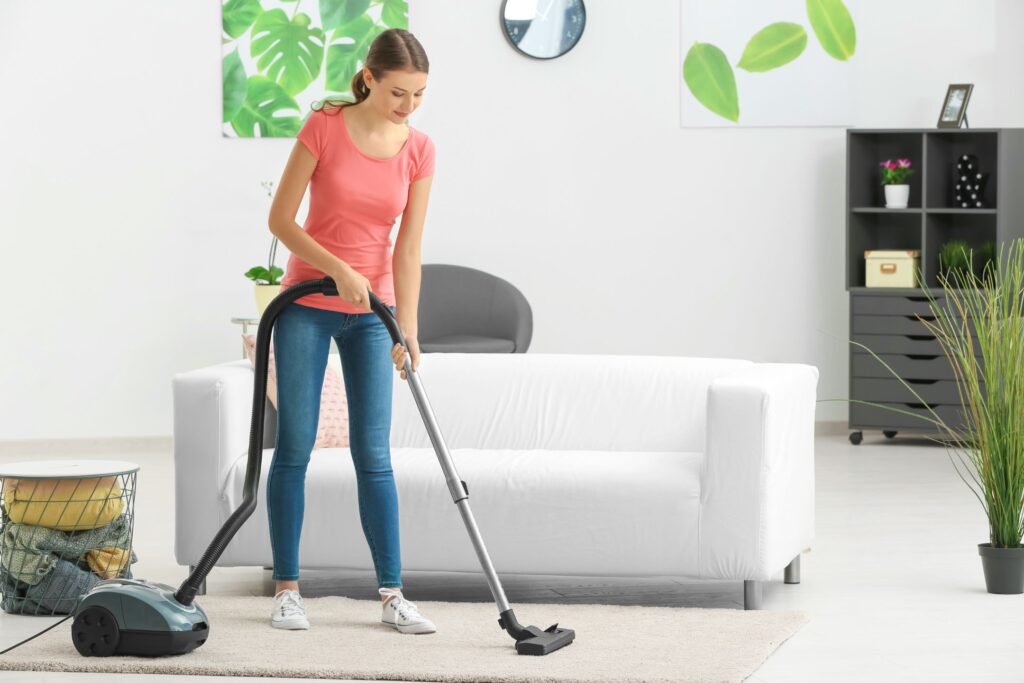
Carpet and upholstery cleaners are great for keeping our home clean and fresh. But these products release dangerous chemicals, such as perchloroethylene, a neurotoxin known colloquially as “perc,” and naphthalene, a potential carcinogen derived from coal tar.
Exposure can cause dizziness, nausea, and long-term damage to the nervous system.
Fortunately, there are greener, safer alternatives.
A homemade cleaning solution of vinegar, hot water, and a small amount of mild, eco-friendly dish soap can be used to tackle most stains.
For tougher stains, consider creating a paste with baking soda and a touch of water. Apply it to the stain, let it dry, and then vacuum it up.
7. Ammonia
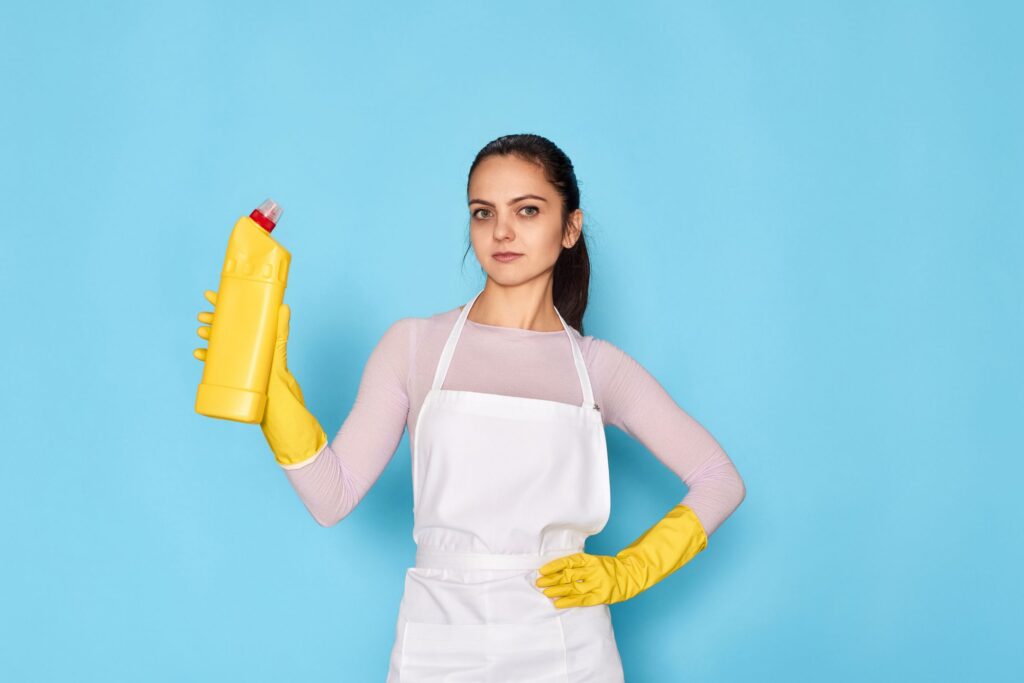
Ammonia is a pretty common ingredient in many household cleaning products because it’s really good at cutting through grime and grease. But, let’s be real, this stuff isn’t without its risks.
Exposure to high concentrations of ammonia can cause irritation to the eyes and lungs, along with skin burns. Chronic exposure can lead to serious respiratory conditions and other health issues.
On the brighter side, there are safer alternatives to cleaning with ammonia. For instance, a mixture of vinegar and water can do wonders for cleaning windows and shining up stainless steel surfaces.
A paste of baking soda and water can work to scrub away stubborn dirt and grime. And a few drops of essential oils can add a pleasant fragrance, making your cleaning solutions not just safer, but also more enjoyable to use.
8. Air fresheners

Air fresheners, while popular for their ability to mask unwanted odors, are sources of indoor air pollution. Most air fresheners contain dangerous chemicals such as phthalates, which can cause hormonal abnormalities, birth defects, and reproductive problems.
They also often contain formaldehyde, a substance known to cause cancer, and volatile organic compounds (VOCs) that can cause headaches, nausea, and liver, kidney and central nervous system damage.
If that’s not bad enough, the synthetic fragrances used in these products can trigger allergies and asthma attacks.
Fortunately, there are safer, natural alternatives to air fresheners. Essential oils, for instance, can be diffused in the air to provide a pleasant scent while also offering potential aromatherapeutic benefits.
Boiling a pot of water with citrus peels or spices like cinnamon and cloves can also fill a room with a refreshing, natural fragrance.
Houseplants, especially those known for their air-purifying properties, can also help maintain a fresh atmosphere indoors.
And let’s not forget good old fashioned baking! Baking your favorite treat will fill your house with that mouthwatering aroma.
9. Dishwasher detergents
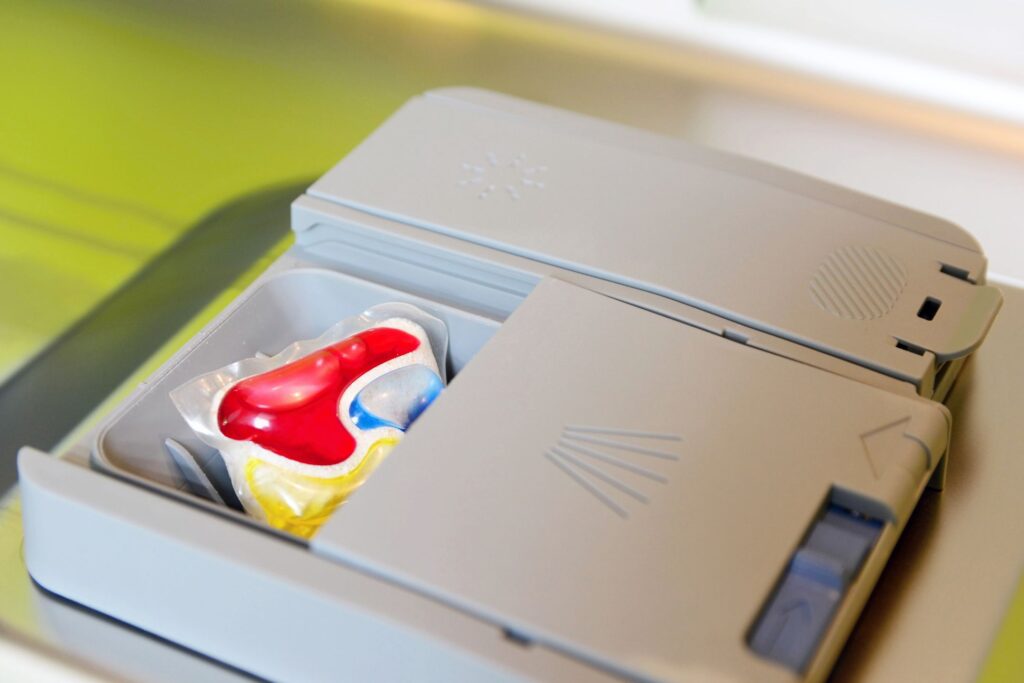
Dishwasher detergents, while effective at cleaning, often contain dangerous household chemicals. Phosphates, for instance, can cause water pollution, promoting excessive growth of algae in water bodies that deprives aquatic life of oxygen.
Chlorine, another commonly used ingredient, can contribute to air pollution when released as steam during the washing cycle, potentially irritating the eyes, skin, and lungs. And many dishwasher detergents include synthetic fragrances and dyes, which can trigger allergic reactions in sensitive individuals.
Fortunately, there are safer alternatives. Look for eco-friendly options that are phosphate and chlorine-free.
There are also homemade recipes that use ingredients like baking soda, washing soda, and citric acid, which are effective at cutting through grease and removing food particles. And white vinegar can be used as a rinse agent to prevent spots and film on dishes.
10. Furniture polish
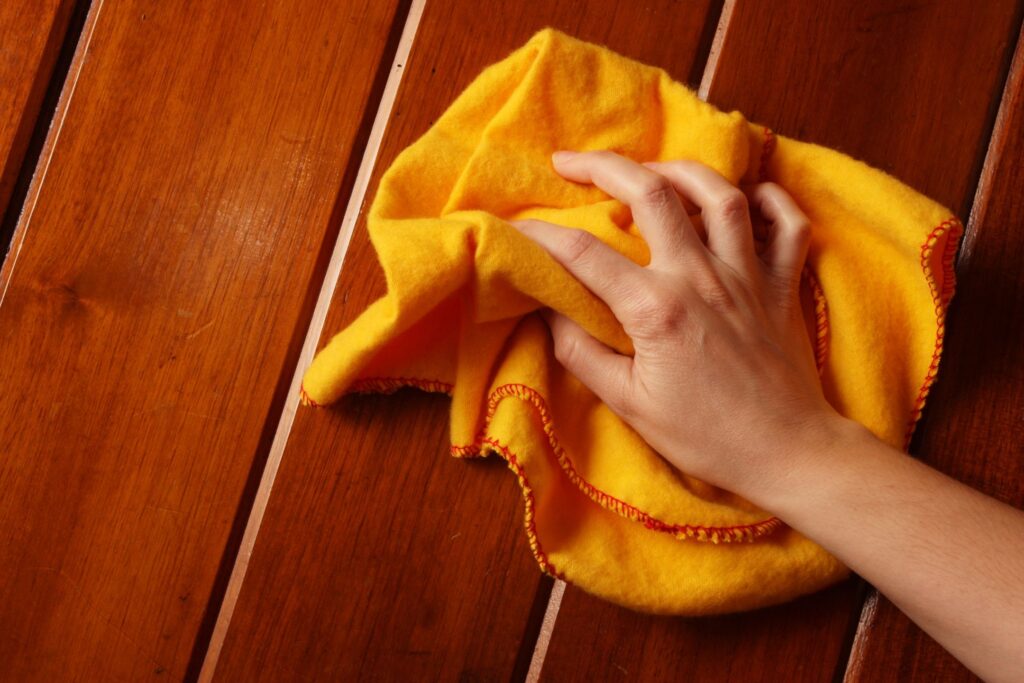
Many conventional furniture polishes contain volatile organic compounds (VOCs) and other chemicals that can cause respiratory irritation and health issues. They often also include petroleum distillates and aerosol propellants, potentially harmful substances that can contribute to indoor air pollution.
Instead, consider turning to natural alternatives for maintaining your furniture.
A simple mixture of olive oil and lemon juice can provide a safe and eco-friendly sheen to wooden furniture.
Beeswax, often available in paste form, is another excellent natural polish for wood. It not only leaves a beautiful shine but also offers added protection to the furniture surface.
Vinegar mixed with water can work wonders for cleaning and polishing glass and metal furniture.
Always remember, a clean, soft cloth is the best tool for applying these natural polishes, to avoid scratching or damaging your furniture.
11. Mold & mildew cleaners
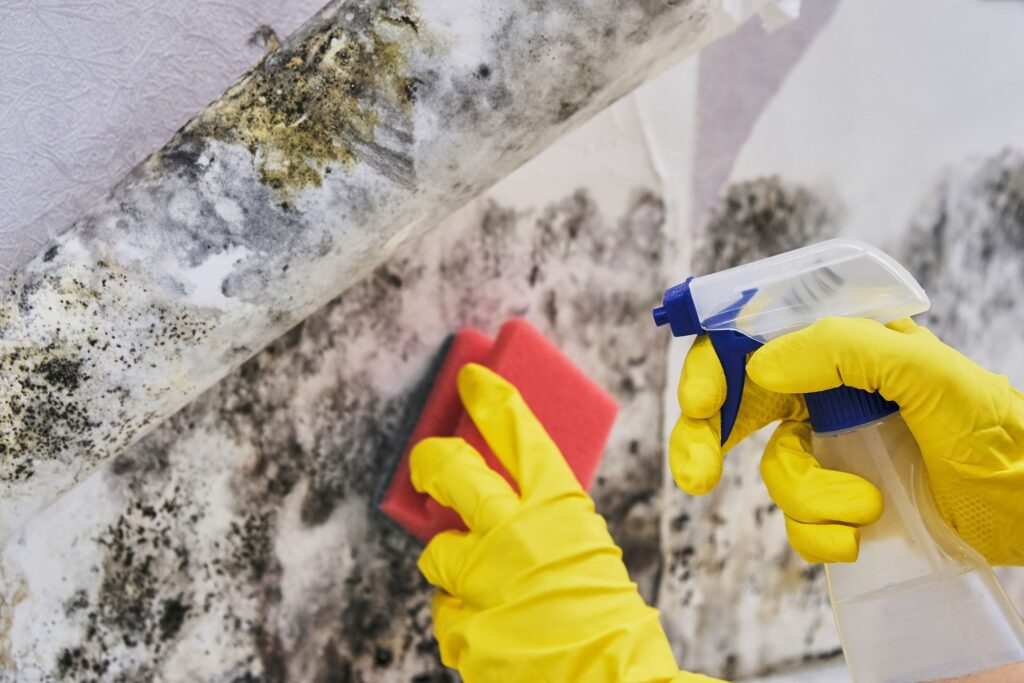
Mold and mildew cleaners can be harmful due to the presence of harsh chemicals such as chlorine bleach, which can cause skin and eye irritation, respiratory issues, and negatively impact the environment. And the fumes from these cleaners may pose a threat to indoor air quality.
As an alternative, consider using Healthy Planet Products’ Mold & Mildew Remover. Made from all-natural ingredients, this product efficiently eliminates mold and mildew without the use of harmful chemicals.
It is a safe, eco-friendly choice that is gentle on surfaces, yet tough on mold, ensuring a clean, healthy living environment.
12. Antibacterial cleaners

Antibacterial cleaners often contain harsh substances like triclosan or quaternary ammonium compounds, which can cause skin irritation, aggravate respiratory conditions, and potentially contribute to antibiotic resistance.
They can pollute water sources and pose environmental risks, as well. And believe it or not, the frequent use of antibacterial products can strip away good bacteria in our house – bacteria that are crucial for our health.
As a safer alternative, consider using the Healthy Planet Products’ All-Purpose Cleaner. This product is made from all-natural ingredients that are just as effective at cleaning as chemical-based cleaners, but without the negative side effects.
It’s suitable for a wide range of surfaces and stains, yet gentle enough to be used daily. With Healthy Planet Products’ All-Purpose Cleaner, you can maintain a clean and healthy home without compromising your health or the environment.
13. Toilet bowl cleaners
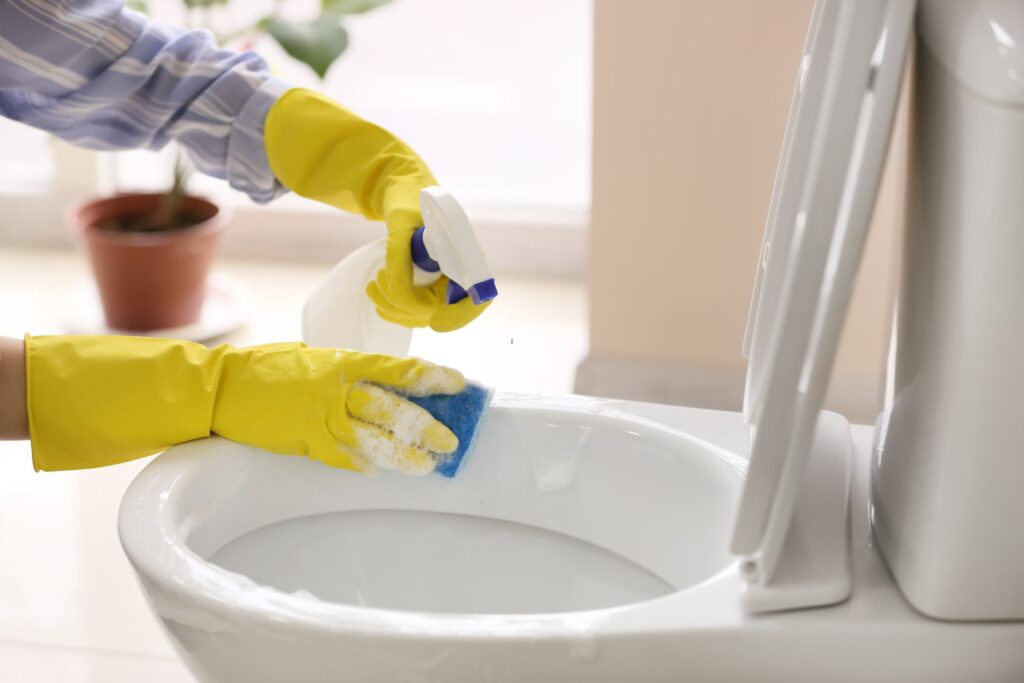
Toilet bowl cleaners are notorious for their harsh chemical composition, often containing substances like hydrochloric acid, bleach, and phosphates. These chemicals can cause skin and eye irritation, respiratory problems, and can even be corrosive to certain materials.
And, when flushed down the toilet, they can contribute to water pollution, harming marine life and disrupting ecosystems.
Instead of relying on conventional toilet bowl cleaners, consider using environmentally friendly options. These alternatives are typically plant-based and free from dyes, artificial brighteners, and synthetic fragrances.
They utilize biodegradable ingredients to effectively remove tough stains, without causing harm to water bodies or marine life when flushed. By choosing green alternatives, you not only maintain the cleanliness of your toilet bowl but also contribute to the preservation of our delicate ecosystems.
What potentially dangerous chemicals are found in common household products?
Traditional household cleaners often contain a range of potentially harmful chemicals. Some of the most common include:
- Ammonia: Found in glass cleaners and polishing agents for bathroom fixtures, sinks, and jewelry. Ammonia can cause skin, eye, and respiratory irritation.
- Phthalates: Present in many fragranced household products such as air fresheners and dish soap. Exposure to phthalates can potentially impact the endocrine system.
- Triclosan: Often found in antibacterial soaps and detergents. Triclosan is thought to contribute to antibiotic resistance and can be harmful to marine life when washed down the drain.
- Sodium Hydroxide: Used in oven cleaners and drain openers. Sodium hydroxide is extremely corrosive and can burn the skin and eyes.
- Chlorine: Common in scouring powders, toilet bowl cleaners, mildew removers, laundry whiteners, and household tap water. Chlorine can be a respiratory irritant and has been linked to thyroid dysfunction.
Adopting greener cleaning alternatives can help reduce exposure to these harmful chemicals in your home while also being kinder to the environment.
How can you stay safe when using toxic household chemicals?
When you’re dealing with toxic household chemicals, it’s really important to take some necessary precautions to ensure your safety. You always want to make sure you’re using these chemicals in a well-ventilated area so you don’t end up inhaling any fumes.
It’s also a good idea to wear some protective gloves and eyewear to keep your skin and eyes safe from direct contact.
Oh, and one more thing – never ever mix different chemicals together, trust me, it can create some seriously extremely dangerous gasses!
And hey, make sure you keep these substances out of reach of children and pets, okay? We definitely don’t want any accidents happening.
Finally, when you’re done with these chemicals, make sure you dispose of them properly. Improper disposal can really harm the environment, and we want to keep things green and clean, right?
So just remember these safety tips and you’ll be good to go when using these substances in your home. Stay safe!
After the dust settles…
So, after the dust settles and all your chores are done, take a moment to consider the impact of your cleaning habits. When you choose safer, more environmentally friendly products, not only do you protect your family’s health, but you also contribute to a greener planet.
Remember, change begins at home – if we all make a few small adjustments, we can make a big difference. Keep your home clean, green, and serene.
Stay safe, and happy cleaning!
Before you go!
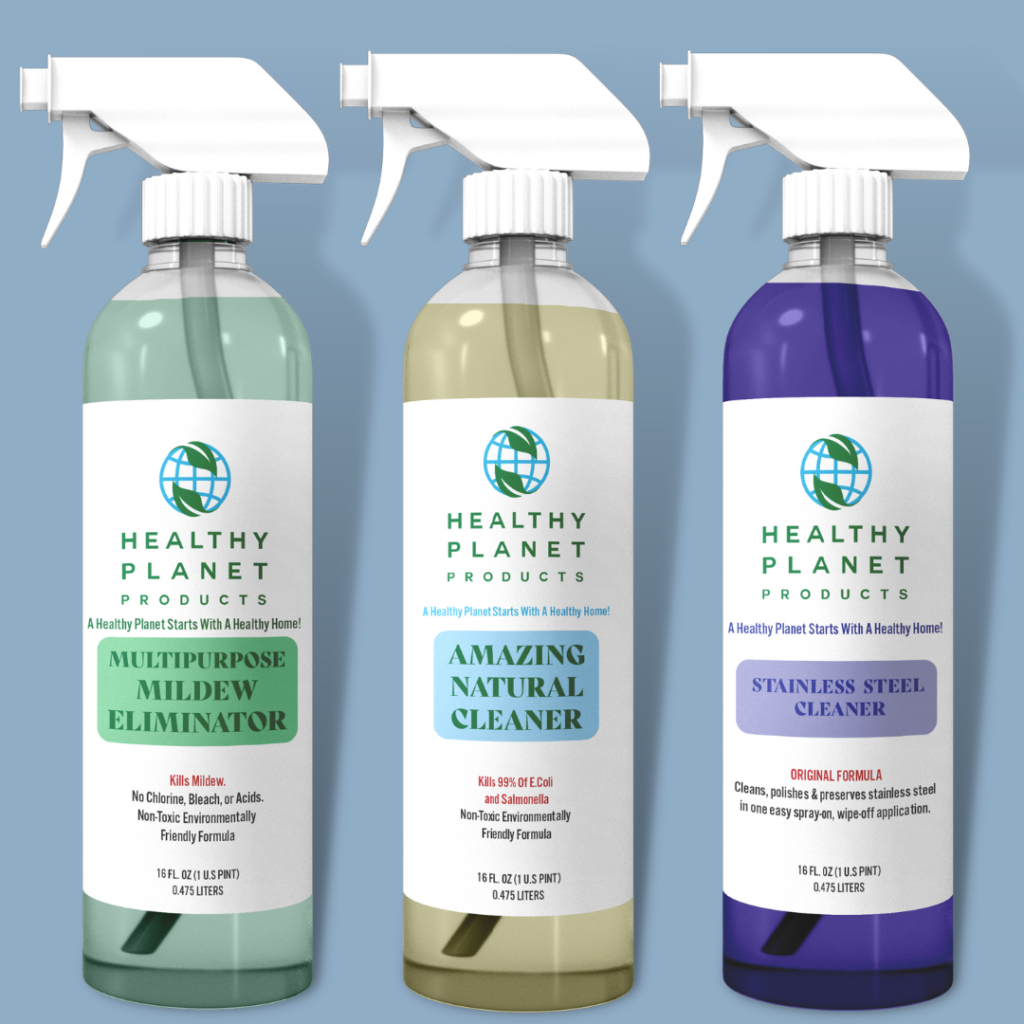
Before you dash off, consider this: Our choices play a pivotal role in shaping our world. If DIY cleaning solutions aren’t your thing, that’s alright!
You can still make a positive impact by choosing environmentally friendly products. Start with Healthy Planet Products – a fantastic source for all-natural cleaning products that are safe for you, your family, and the planet.
By making this switch, you not only contribute to a healthier home environment, but also support our collective efforts towards a greener Earth.
So why wait? Start your journey towards a cleaner, healthier, and more sustainable lifestyle with Healthy Planet Products today!
Related to harmful chemicals in household cleaning products
Are You Looking for an Easy DIY Nontoxic Dishwasher Detergent Recipe?
The 7 Safest Household Cleaners for a Super Clean Home
4 Best Stainless Steel Cleaner Natural Solutions for a Sparkling Kitchen
The 6 Best Pet Friendly Hardwood Floor Cleaners for Your Family
Here’s the 5 Absolute Best Eco-Friendly Toilet Bowl Cleaners for Your Home
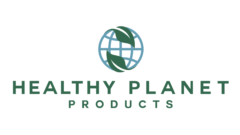
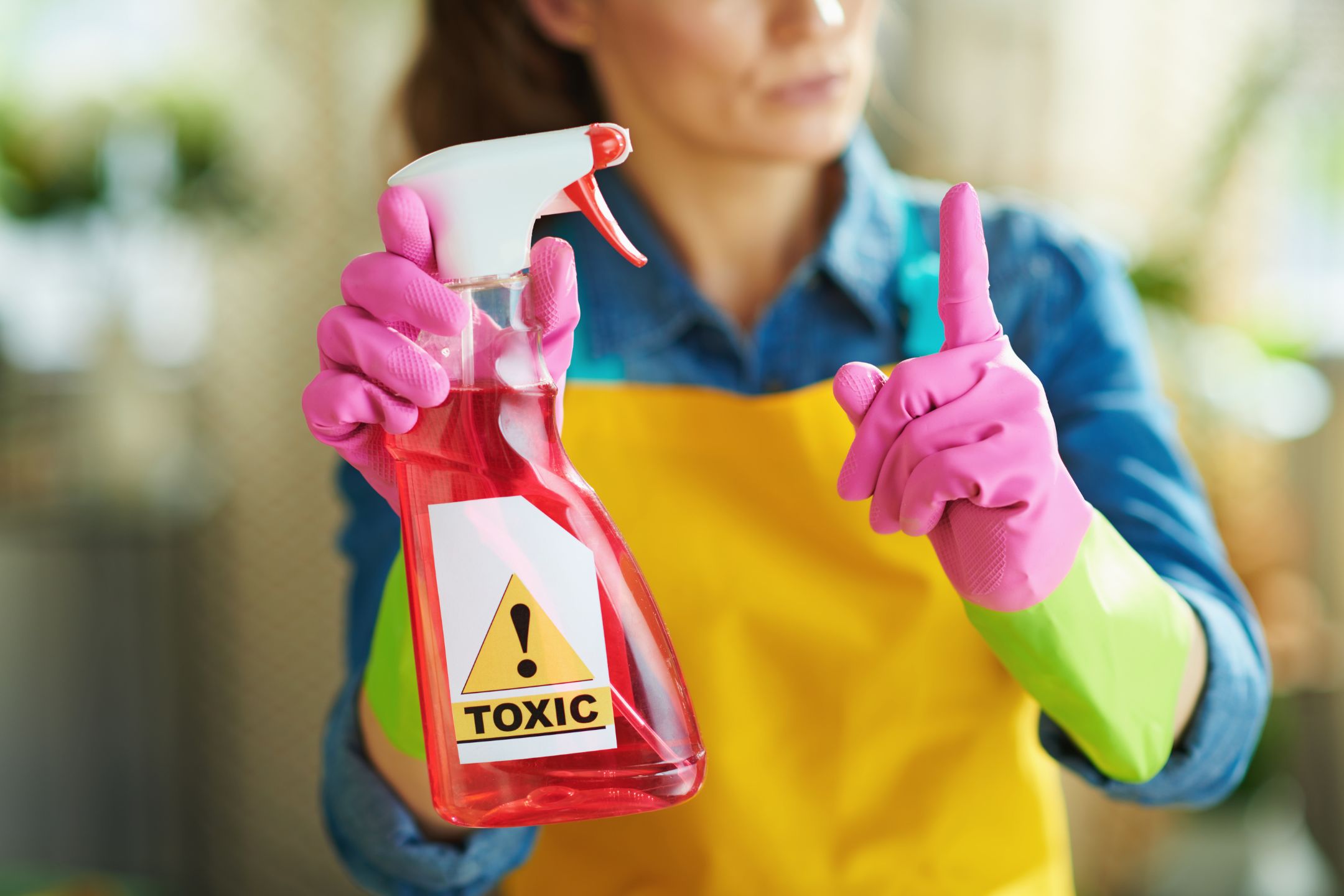
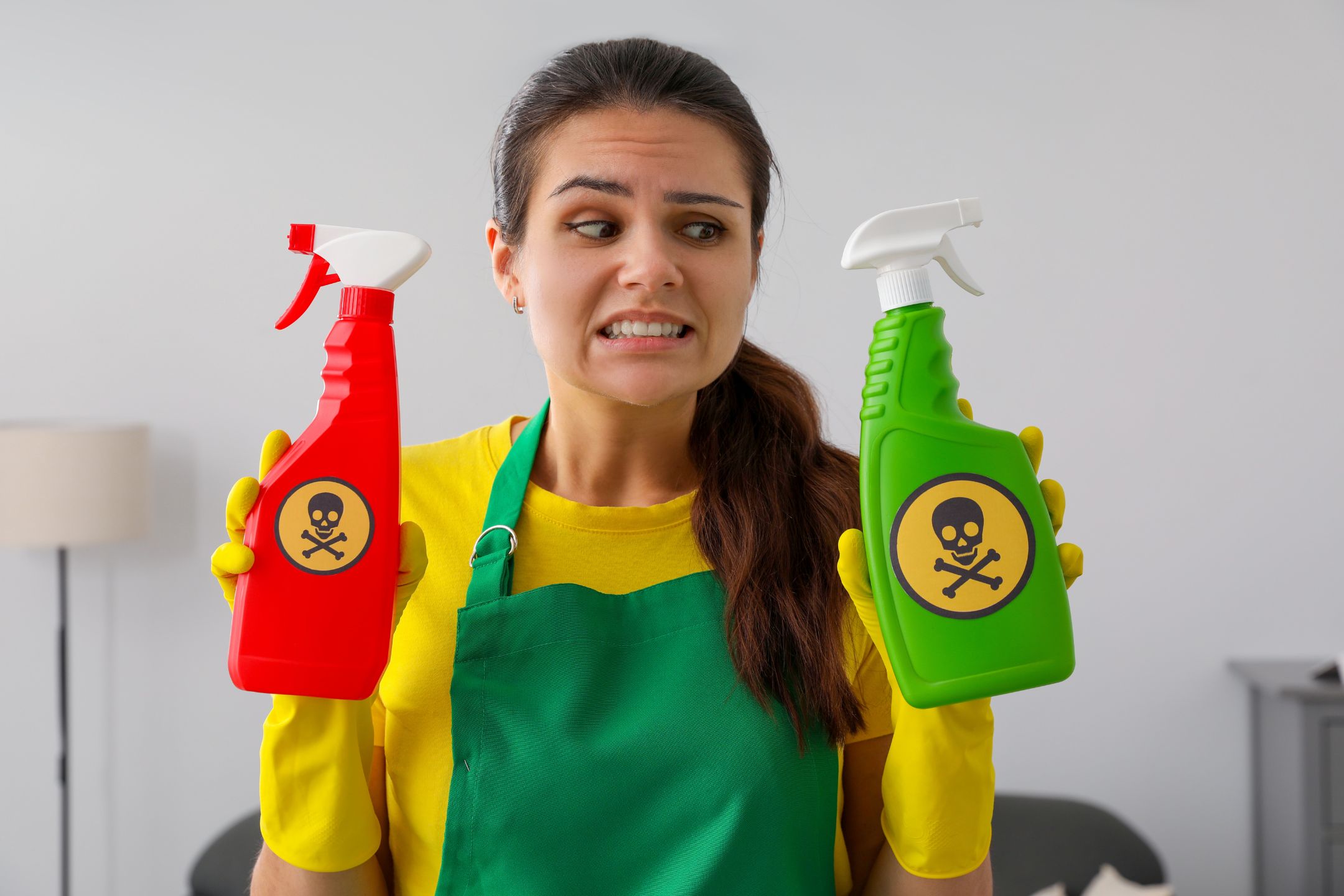
I came across this wonderful website recently, they deliver excellent content for viewers. The site owner knows how to provide value to the audience. I’m pleased and hope they continue their splendid service.